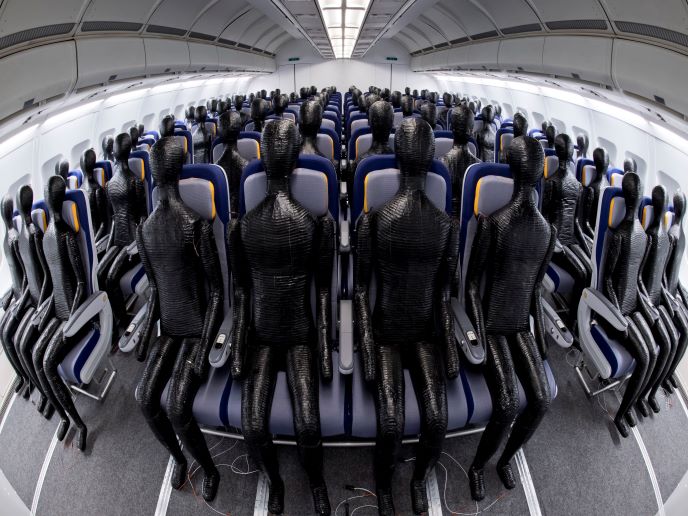A better ventilation system for aircraft cabins
As aircraft look to become even safer and more energy-efficient, some are turning their attention to the cabin. “Today’s aircraft use mixing ventilation (MV) as a means of providing a mixture of outside air and recirculated air filtered through a high-efficiency particulate air filter to the cabin,” says Daniel Schmeling, team leader of Vehicle Ventilation and Air Conditioning at the German Aerospace Center (DLR) in Göttingen. “However, due to such factors as higher seating densities, the use of personal electronic equipment, and increasing expectations for comfort, standard MV systems have reached their limits of effectiveness.” According to Schmeling, designing new ventilation concepts requires many adjustments to the aircraft’s cabin. “Alternative ventilation concepts that offer enhanced heat removal and local ventilation efficiency first require one to reconsider the ratio between outside and recycled air in the aircraft cabin,” he explains. This is where the EU-funded ADVENT (Advanced ventilation techniques for modern long-range passenger aircraft to promote future energy management systems) project comes in. Part of the EU’s Clean Sky initiative, the project is evaluating innovative new ventilation concepts for long-haul aircraft cabins. “These concepts are being evaluated in terms of thermal passenger comfort, energy efficiency and local air quality,” adds Schmeling, who serves as the project’s coordinator. “Furthermore, new ventilation architectures with improved airflows could enable enhanced industrial manufacturing processes based on modularisation.”
A two-pronged approach
To evaluate the proposed ventilation concepts, the project took a two-pronged approach. First, an evaluation was conducted using numerical computational fluid dynamics in a simplified geometry. Next, experiments were conducted in a state-of-the-art long-range cabin mock-up, complete with thermal-enhanced passenger manikins. “The ADVENT project designed and built this mock-up from the ground up,” remarks Schmeling. “Offering realistic thermal boundary conditions, it was shown to be an indispensable tool for researching the static and dynamic temperatures of all cabin surfaces during all phases of a flight.” Initial testing of a ceiling-based microjet ventilation system in the mock-up has already proved its operational readiness. Based on this, researchers not only confirmed the numerically predicted advantages of this concept over standard MV systems, they also highlighted the challenges of implementing such a system.
An amazing mock-up
Despite some delays due to the COVID-19 pandemic, the project succeeded in numerically investigating several preselected ventilation concepts – with one already filing for a patent. However, according to Schmeling, the project’s key outcome remains the mock-up. “Just looking inside this mock-up with its 100 thermal manikins and the large cabin cross-section is amazing,” he says. “Thanks to its use of the latest in optical and sensor-based measuring techniques, this new research facility has the proven ability to dynamically analyse the capabilities of future ventilation concepts.” Once the project is over, the new mock-up will be made available for use by the European aerospace research sector. With the project now expected to run through 2022, researchers are planning to study additional ventilation concepts, including crown-integrated and floor-integrated systems. “The net result of our work will be a new generation of cabin ventilation concepts and tools that will serve as a breath of fresh air for aircraft designers and passengers alike,” concludes Schmeling.
Keywords
ADVENT, aircraft, aircraft cabins, ventilation system, mixing ventilation, Clean Sky, aerospace







